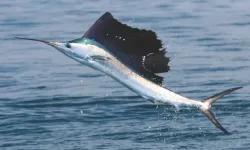The new penalty system sorts violations into three levels: minor, medium, and serious, reflecting how severe the offense is.
Minor violations, like administrative slip-ups that don't endanger people or the environment, could include a ship captain forgetting to tell the Transport Minister before entering a safety zone. Medium violations, which involve not following pollution rules, might include someone cheating on a test to get a maritime license. Serious violations, which could harm human health or the environment, range from mishandling gas to dumping cargo waste in polar waters under specific conditions.
These penalty hikes are part of Canada's Oceans Protection Plan, a teamwork effort involving Indigenous Peoples, businesses, communities, scientists, and the government.
"We're dead serious about keeping our waters safe and protecting Canadians, which is why we're increasing these penalties," said Rodriguez. "This is another step under Canada's Oceans Protection Plan to ensure our coasts and waterways stay safe for years to come."
The Canada Shipping Act, 2001, lets authorities use fines to enforce the law and its rules. The old maximum fine of CAD $25,000 per violation was set in 2008, and the new amount shows Canada's ongoing push to make its marine safety system stronger and discourage rule-breakers.
Transport Canada watches over the shipping industry by doing inspections and checks to make sure everyone follows the rules. If they find a violation, they have different ways to deal with it, like giving warnings or canceling licenses. In the most serious cases, they might even take legal action, leading to fines of up to CAD $1 million and/or jail time of up to 18 months.
These penalties aren't the same as criminal charges, which are for the very worst cases of rule-breaking.





